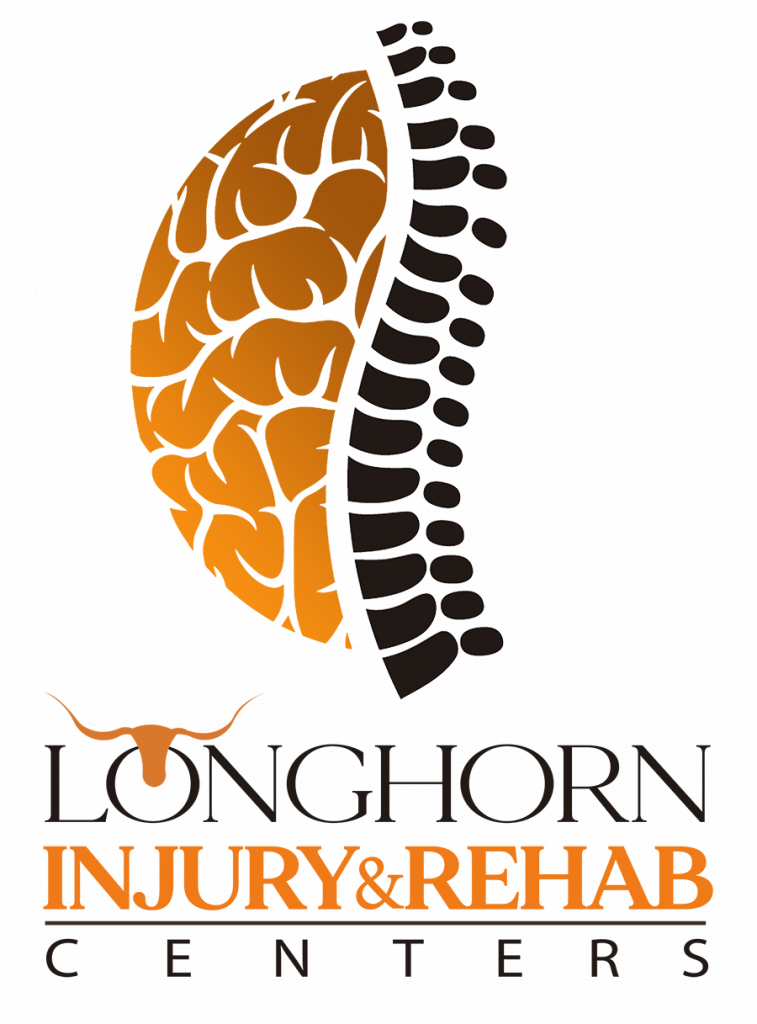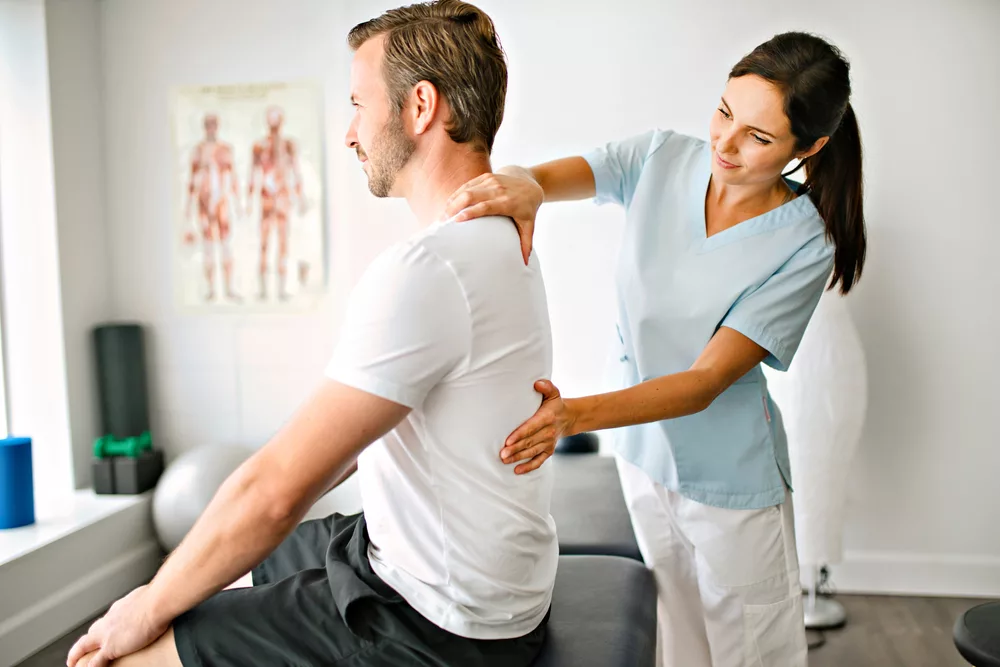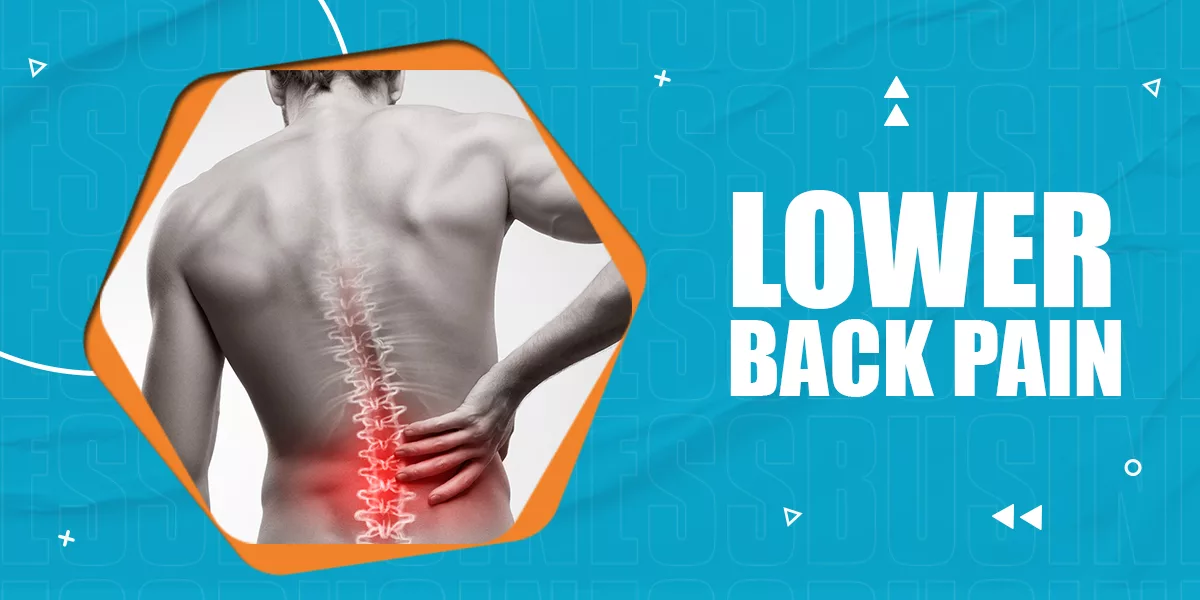
The Holistic Approach of Chiropractors for Lower Back Pain
Back Pain Chiropractor | New Patient Special | $59 Chiropractic Adjustment
Lower back pain is a prevalent and often debilitating condition that affects millions of people worldwide. While there are various treatment modalities available, chiropractic care has gained recognition for its effectiveness in providing relief from lower back pain. What does a chiropractor do for lower back pain? In this blog post, we delve into the role of chiropractors, their methods, and the science behind how chiropractic adjustments can contribute to alleviating lower back pain.
What Do Chiropractors Do?

Chiropractors are the spinal health experts. Helping to restore proper spinal biomechanics and improved nervous system function begins with a patient’s case history. This gives the chiropractor a background about your health, such as surgeries, accidents, the onset of your condition and other details affecting your current health. After reviewing your history and discussing your specific problem, a thorough orthopedic, neurological and chiropractic examination is performed. X-rays may be taken to uncover structural and functioning problems associated with the spinal column. These examinations help identify areas of spinal malfunction and resulting nervous system deficit. The findings of these examinations are explained and a plan of chiropractic adjustments may be recommended. Progress is monitored with periodical examinations and follow-up reports.
The Spine as the Keystone
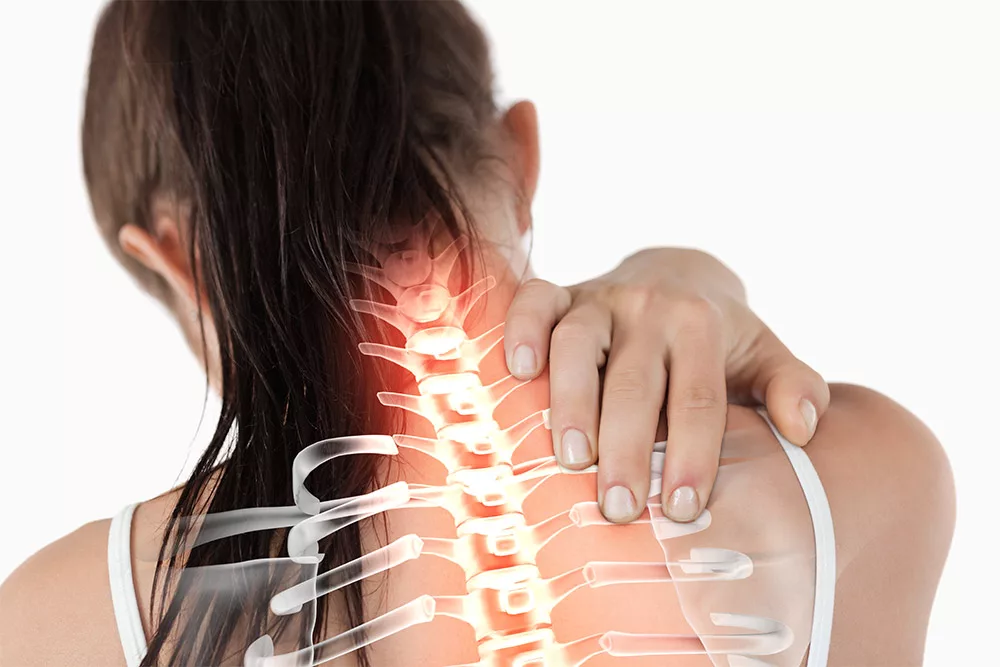
Chiropractic care is built upon a fundamental belief in the significance of spinal health. At the core of this approach lies the understanding that the spine is intricately connected to the nervous system, playing a pivotal role in overall health. Misalignments or subluxations in the spine are seen as potential culprits in various health issues, including lower back pain.
Holistic Approach to Wellness
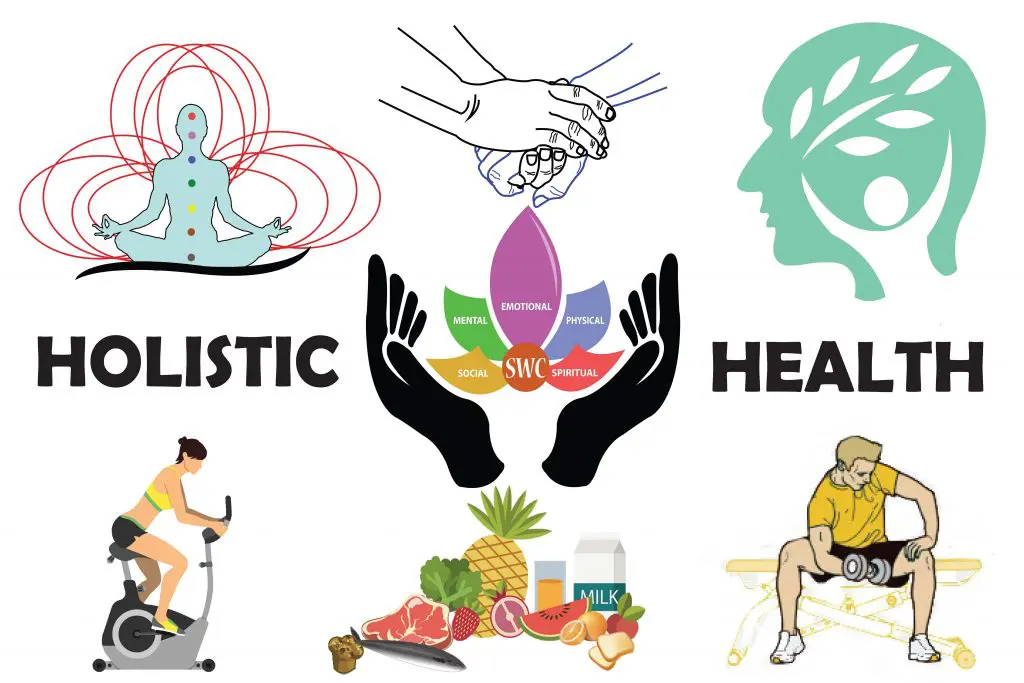
Chiropractors adopt a holistic perspective, recognizing the interconnected nature of the body’s systems. Beyond merely treating symptoms, chiropractic care seeks to address the root causes of musculoskeletal issues, striving for comprehensive well-being. Lower back pain becomes a focal point for chiropractors as they work to restore balance and function to the spine and its surrounding structures.
What Causes Lower Back Pain?
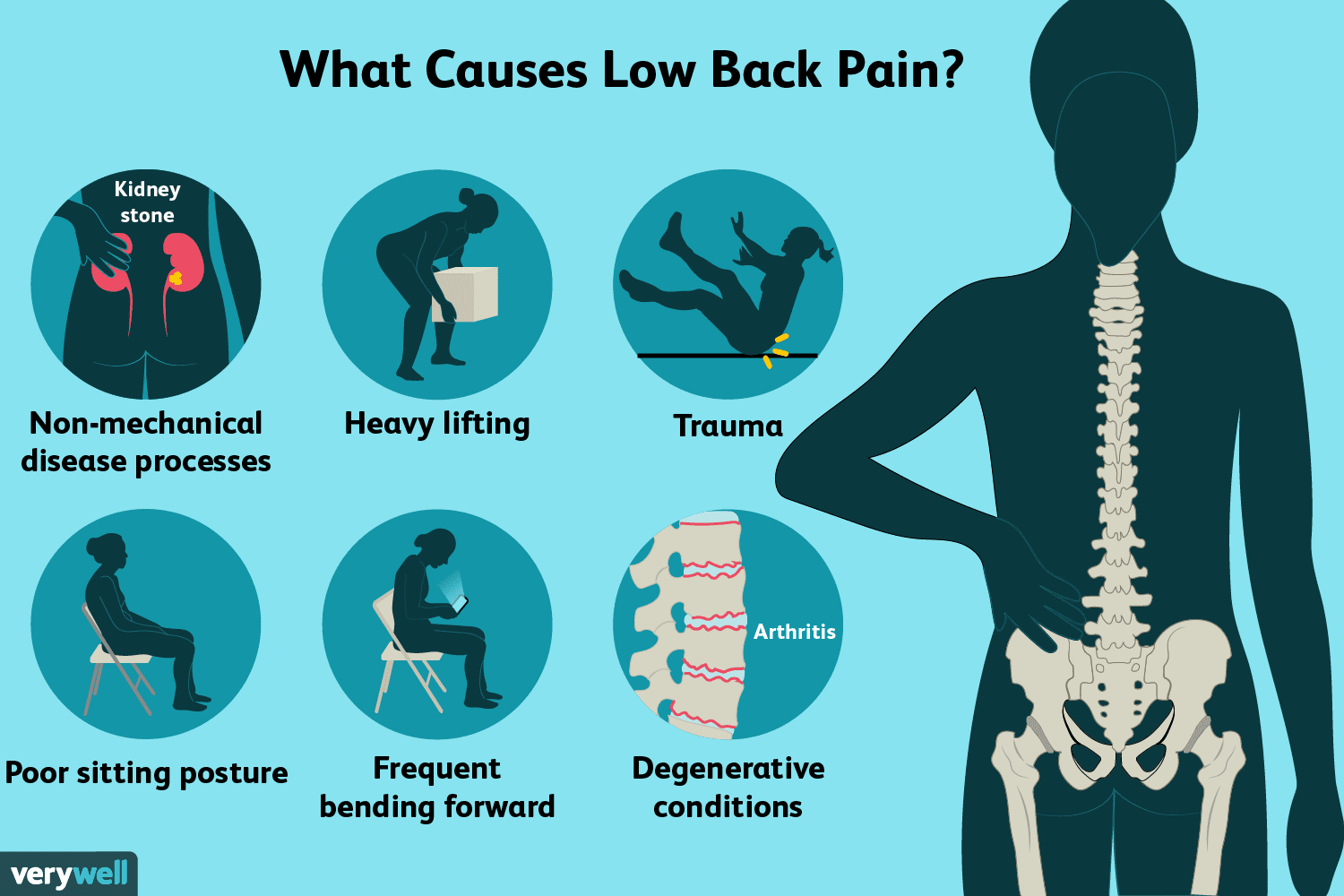
Lower back pain can arise from a variety of causes, ranging from mechanical issues to underlying medical conditions. Here are some common causes of lower back pain:
- Muscle Strain or Sprain:
- Overexertion, lifting heavy objects improperly, or sudden movements can lead to strains or sprains in the muscles and ligaments of the lower back.
- Herniated Disc:
- A herniated or bulging disc occurs when the soft inner core of a spinal disc protrudes through the tough outer layer, potentially pressing on nearby nerves and causing pain.
- Degenerative Disc Disease:
- The natural aging process can cause discs in the spine to degenerate, leading to reduced cushioning between vertebrae and contributing to lower back pain.
- Spinal Stenosis:
- Spinal stenosis involves the narrowing of the spinal canal, which can put pressure on the spinal cord and nerves, resulting in lower back pain.
- Osteoarthritis:
- Osteoarthritis is a degenerative joint condition that can affect the facet joints in the spine, leading to pain and stiffness in the lower back.
- Spondylolisthesis:
- This condition occurs when a vertebra slips out of place and onto the vertebra below it. It can cause lower back pain and, in some cases, compression of spinal nerves.
- Sciatica:
- Sciatica is characterized by pain that radiates along the path of the sciatic nerve, often caused by compression or irritation of the nerve roots in the lower spine.
- Muscle Imbalances:
- Weak or imbalanced muscles in the core or pelvic region can contribute to lower back pain, as they may fail to provide adequate support to the spine.
- Poor Posture:
- Prolonged sitting or standing in positions that strain the spine can contribute to poor posture, leading to lower back pain over time.
- Traumatic Injuries:
- Injuries resulting from accidents, falls, or trauma can cause damage to the spine, leading to acute or chronic lower back pain.
- Arthritis:
- Various forms of arthritis, including rheumatoid arthritis and ankylosing spondylitis, can affect the spine and contribute to lower back pain.
- Infections and Inflammatory Conditions:
- Infections of the spine, such as osteomyelitis, or inflammatory conditions like ankylosing spondylitis, can cause lower back pain.
- Structural Abnormalities:
- Congenital conditions or abnormalities in the spine’s structure can contribute to lower back pain.
- Emotional Stress:
- Chronic stress or emotional factors may contribute to muscle tension and exacerbate lower back pain.
- Obesity:
- Excess body weight can put added stress on the spine, contributing to lower back pain, especially in the lumbar region.
It’s essential to note that lower back pain can be complex, and multiple factors may interact to contribute to an individual’s pain. If you are experiencing persistent or severe lower back pain, it is advisable to consult with a healthcare professional for a thorough evaluation and appropriate management.
The Chiropractic Approach to Lower Back Pain

1. Initial Assessment
Chiropractors begin by conducting a thorough examination of the patient’s medical history and performing a physical examination. This assessment helps identify the root cause of the lower back pain and determines whether chiropractic care is a suitable treatment option.
2. Spinal Adjustment
The hallmark of chiropractic care is the spinal adjustment, also known as spinal manipulation or chiropractic adjustment. This manual technique involves the application of controlled force to a specific joint in the spine to restore proper alignment. In the context of lower back pain, chiropractors often target the lumbar spine, where misalignments can contribute to pain and discomfort.
3. Joint Mobilization
Apart from spinal adjustments, chiropractors may use joint mobilization techniques to improve the mobility of the joints in the lower back. This involves gently moving the joint through its natural range of motion to reduce stiffness and enhance flexibility.
4. Soft Tissue Therapy
Chiropractors may incorporate soft tissue therapies to address muscle tension and tightness in the lower back. Techniques such as massage, myofascial release, and trigger point therapy aim to release tension in the muscles and promote relaxation.
5. Exercise and Rehabilitation
Chiropractors often prescribe specific exercises and stretches to strengthen the muscles supporting the lower back. These exercises are designed to improve flexibility, stability, and overall function, contributing to long-term relief from lower back pain.
6. Posture and Ergonomic Guidance
Chiropractors provide guidance on maintaining proper posture and ergonomics, especially in daily activities and at the workplace. Correcting poor posture and ensuring ergonomic alignment can prevent the recurrence of lower back pain.
7. Nutritional Counseling
Some chiropractors incorporate nutritional counseling as part of their holistic approach. They may recommend dietary changes or supplements to support overall musculoskeletal health and reduce inflammation that contributes to lower back pain.
It’s important to note that chiropractic care is highly individualized. The specific techniques and interventions used by chiropractors may vary based on the patient’s condition, preferences, and response to treatment. Additionally, chiropractors may collaborate with other healthcare professionals when necessary to ensure comprehensive care for individuals with lower back pain. If you’re considering chiropractic care for lower back pain, consulting with a qualified chiropractor is recommended to determine the most suitable approach for your specific needs.
The Science Behind Chiropractic Care for Lower Back Pain
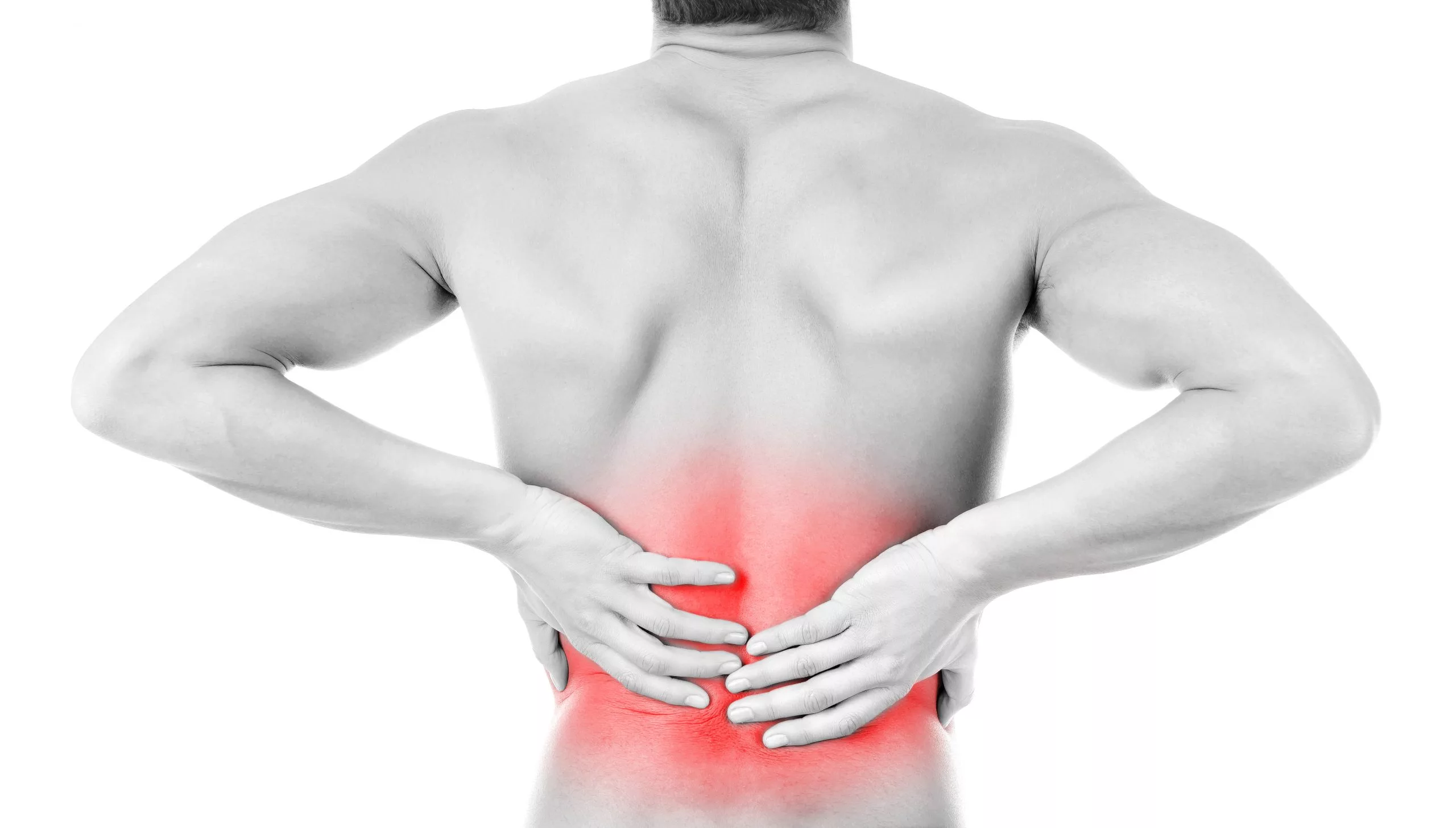
1. Spinal Misalignments and Nervous System Impact
Chiropractors believe that misalignments in the spine, known as subluxations, can interfere with the nervous system’s function. The nervous system plays a crucial role in transmitting signals between the brain and the body, including pain signals. By addressing spinal misalignments, chiropractors aim to restore optimal nervous system function and alleviate pain.
2. Release of Endorphins
Chiropractic adjustments have been associated with the release of endorphins, the body’s natural painkillers. This natural analgesic response can contribute to the reduction of pain and improvement in the overall sense of well-being.
3. Reduced Muscle Tension
Chiropractic care has been shown to reduce muscle tension and spasms in the lower back. By addressing both the spinal alignment and the surrounding soft tissues, chiropractors can help relax tight muscles, providing relief from pain and discomfort.
4. Improved Joint Mobility
Chiropractic adjustments and joint mobilization techniques enhance joint mobility in the lower back. Improved joint function contributes to better movement and reduced stiffness, promoting a more comfortable range of motion.
5. Inflammation Reduction
Chiropractic care may help reduce inflammation in the lower back. Inflammation is a common contributor to pain, and by addressing the underlying causes, chiropractors aim to alleviate both acute and chronic lower back pain.
Conditions Treated by Chiropractors for Lower Back Pain
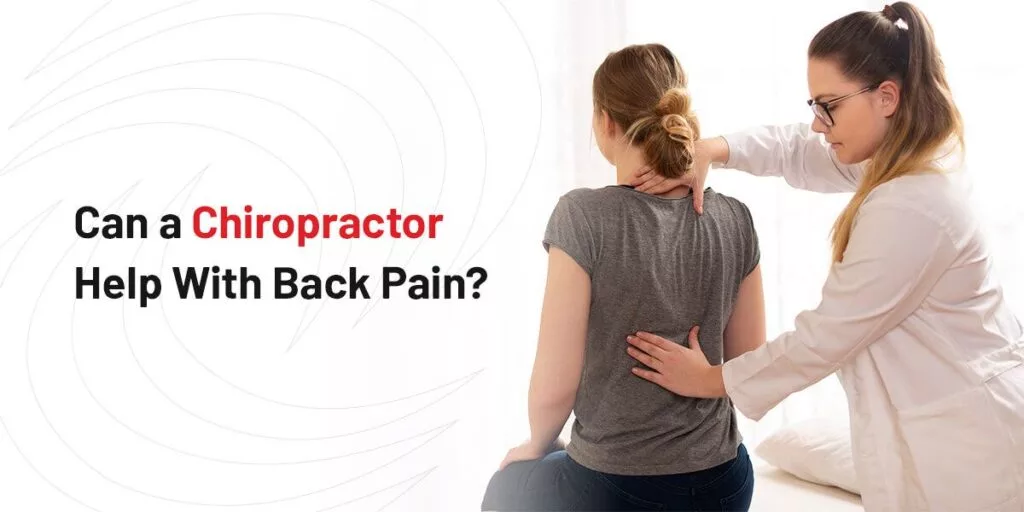
Lower back pain is a common reason why individuals seek chiropractic care. Chiropractors use various techniques and interventions to address a range of conditions contributing to lower back pain. Here are some of the conditions that chiropractors may treat:
-
Herniated Discs:
- Description: The spinal discs, which act as cushions between the vertebrae, can sometimes rupture or bulge, causing pressure on nearby nerves.
- Chiropractic Approach: Chiropractors may use spinal adjustments to relieve pressure on the affected disc, promoting healing and reducing associated pain.
- Sciatica:
- Description: Sciatica refers to pain that radiates along the path of the sciatic nerve, which extends from the lower back down the back of each leg.
- Chiropractic Approach: Chiropractors aim to address the underlying causes of sciatica, such as nerve compression or irritation, through spinal adjustments and other therapeutic interventions.
- Muscle Strain or Sprain:
- Description: Overexertion or sudden movements can lead to muscle strain or sprain in the lower back, causing pain and discomfort.
- Chiropractic Approach: Chiropractors use a combination of spinal adjustments, soft tissue therapies, and rehabilitative exercises to alleviate muscle tension and promote healing.
- Facet Joint Dysfunction:
- Description: The facet joints, located between the vertebrae, can become misaligned or irritated, leading to pain and restricted movement.
- Chiropractic Approach: Chiropractors focus on restoring proper alignment to the facet joints through spinal adjustments, reducing dysfunction and improving joint function.
- Lumbar Strain:
- Description: Lumbar strain involves overstretching or tearing of the muscles and ligaments in the lower back, often resulting from improper lifting or sudden movements.
- Chiropractic Approach: Chiropractors address lumbar strain through a combination of spinal adjustments, soft tissue therapies, and rehabilitative exercises to promote healing and prevent recurrence.
- Scoliosis:
- Description: Scoliosis is a condition characterized by an abnormal curvature of the spine, which can lead to lower back pain.
- Chiropractic Approach: Chiropractors may use spinal adjustments to improve spinal alignment and reduce pain associated with scoliosis. They may also incorporate corrective exercises to enhance posture.
- Spinal Stenosis:
- Description: Spinal stenosis involves the narrowing of the spinal canal, leading to compression of the spinal cord or nerves and resulting in lower back pain.
- Chiropractic Approach: Chiropractors aim to address the contributing factors to spinal stenosis, such as misalignments, through spinal adjustments and therapeutic exercises to improve spinal function.
- Degenerative Disc Disease:
- Description: Degenerative disc disease involves the gradual wear and tear of spinal discs, leading to pain, stiffness, and reduced mobility.
- Chiropractic Approach: Chiropractors may use spinal adjustments to improve the alignment of the spine and reduce stress on degenerated discs, contributing to pain relief.
- Sacroiliac Joint Dysfunction:
- Description: The sacroiliac joints, located at the base of the spine, can become dysfunctional, causing pain and discomfort.
- Chiropractic Approach: Chiropractors address sacroiliac joint dysfunction through targeted adjustments and stabilizing exercises to restore proper joint function.
- Pelvic Imbalances:
- Description: Imbalances in the pelvic region can contribute to lower back pain and affect overall posture.
- Chiropractic Approach: Chiropractors work to restore pelvic balance through a combination of adjustments, soft tissue therapies, and corrective exercises.
It’s important to note that the effectiveness of chiropractic care can vary based on the individual’s condition, overall health, and adherence to the recommended treatment plan. What does a chiropractor do for lower back pain? Chiropractors often take a personalized approach, tailoring interventions to the specific needs of each patient. Additionally, chiropractors may collaborate with other healthcare professionals when necessary to ensure comprehensive care for individuals with lower back pain. If you are experiencing lower back pain or have a specific condition, consulting with a qualified chiropractor can help determine the most appropriate and effective course of treatment for your unique situation.
Conclusion: Empowering Individuals on the Path to Relief

What does a chiropractor do for lower back pain? Chiropractors play a significant role in the management of lower back pain through their expertise in spinal adjustments, soft tissue therapies, and holistic approaches to musculoskeletal health. While chiropractic care is not a one-size-fits-all solution, many individuals find relief and improved functionality with this non-invasive and drug-free approach. If you’re experiencing lower back pain, consulting with a qualified chiropractor can be a valuable step toward understanding and addressing the underlying causes of your discomfort. Always prioritize communication with healthcare professionals to ensure a comprehensive and safe approach to managing lower back pain through chiropractic care.
Don’t Let Pain Dictate Your Life. Schedule A Consultation Today.
Call 844-589-7246
Looking for a best back pain chiropractor near me in Dallas, TX? Longhorn Injury provides chiropractic adjustment for back, neck & sciatic pain relief. Moreover, we provide consultation, diagnostic and therapeutic services for patients suffering from a variety of acute and chronic pain conditions.
Contact us for Best Chiropractors in Dallas, Texas for an Appointment Today.
Longhorn Injury is your Chiropractor in Dallas, TX.
Can a chiropractor get rid of lower back pain?
Research shows that spinal manipulation can help relieve pain and improve function in people with acute low-back pain, one of the most common types of back pain.
How long does it take for a chiropractor to fix back pain?
Link to Frequency of Visits. If you don't have 50% pain alleviation within 30 days of care, you will be referred for more testing or consultation. 91% of patients reported relief within 90 days.
What happens when chiropractor adjusts lower back?
During the lower back adjustment, you will be asked to lie down on a special table. The chiropractor will manipulate your limbs to stretch your muscles and to stimulate joint release - that's the popping or cracking sound. It's just like cracking your knuckles, but on a larger scale.
Are chiropractic adjustments safe?
Chiropractic adjustment is generally considered safe when performed for the right condition by someone who is properly trained and licensed to practice chiropractic care. Complications are rare, but they are possible.
Do chiropractic adjustments last?
Depending on the things you do after your visit to the chiropractor, the effects of your treatment can last days or just a few hours. Fortunately, you can extend the positive effects of your adjustments by following a few simple guidelines.
